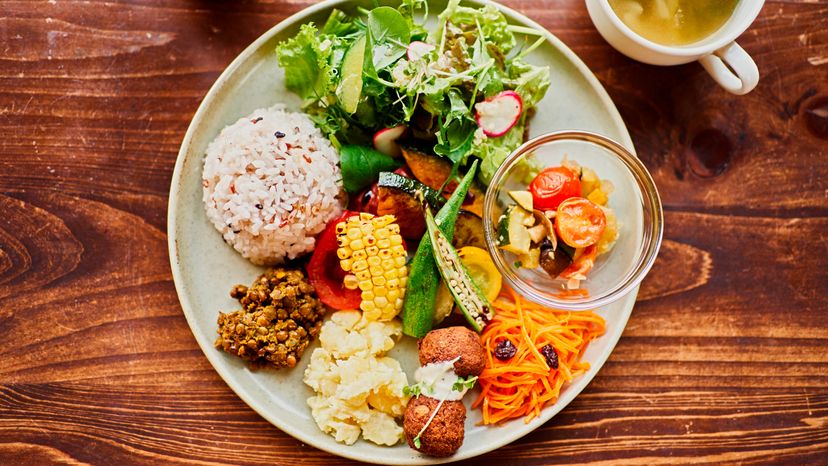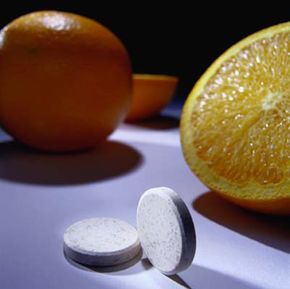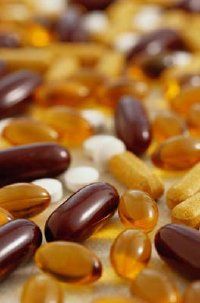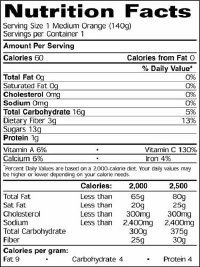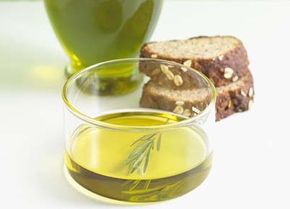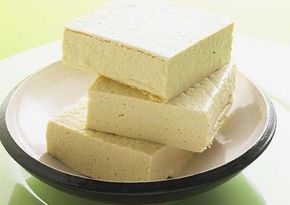Protein is an important element of any diet, but it's importance is often overstated. In fact, protein is, as a nutritional source, somewhat overrated. Although getting enough may be the difficulty in some areas of the world, it's rarely a problem in the United States. In fact, too much protein is our curse.
Still, it is essential for growth, indeed for life itself. Protein is made up of amino acids that your body uses to make body tissue and vital enzymes. There are nine essential amino acids that you must get in your diet.
You need about 50 to 60 grams of protein per day, and that's not as much as it sounds. Consider this: A quarter pound of meat, cooked, provides about 20 grams of protein, and a glass of milk adds another 8 grams. Every slice of bread, or equivalent serving of starch, adds another 2 grams each. So you see how easy it is to get enough protein. Anyone who eats meat easily gets more than enough.
Too Much Of A Good Thing
Many people make the mistake of thinking you can never get too much protein. They associate protein with growth and assume more is better. They couldn't be more wrong. Once your body gets the amount of protein it needs, it converts the rest to energy, and if you already have enough energy, it is converted to fat. Obviously, this is not what you have in mind when you order the cottage cheese and hamburger diet plate!
Too much protein can also rob the body of its bone-strengthening calcium stores and has been implicated in osteoporosis. Although most people's kidneys can handle the job, eating excessive amounts of protein does put a strain on your kidneys, whose job it is to filter out the by-products of protein digestion.
Just as with sugar, protein's biggest problem is the company it keeps. Protein and fat just seem to go hand-in-hand. Think about it. High-protein foods are very frequently high-fat foods: meat, milk, and cheeses. Fortunately, there are low-fat choices, including skim milk, reduced-fat cheeses, and lean meats.
If you don't choose low-fat options and consistently eat foods with too much fat, you'll gain weight. That's because fat provides nine calories per gram -- more than twice the four calories per gram provided by either carbohydrate or protein. But fat is also essential to life. It's a source of linoleic and linolenic acids, which are essential fatty acids, and it's needed for brain functioning and absorbing fat-soluble nutrients.
The Road To Heart Disease
First and foremost among the health problems associated with dietary fat is heart disease -- the leading killer of both men and women. The fat content of your diet is only one risk factor -- family history, smoking, and exercise are others -- but dietary fat plays a crucial role. And unlike family history, it's one you can control.
The relationship between dietary fat and heart disease risk is somewhat complicated. If you want to understand how fat can increase your risk, you've got to look at the sometimes confusing topic of cholesterol.
Cholesterol is not a fat, although it is a fatlike, waxy substance (lipid). It is only found in foods that come from animals. Like fat, it leads a schizophrenic life: vilified but essential to life. Cholesterol is needed to make vitamin D and the sex hormones, and it is a key ingredient in the protective covering around nerves.
The danger comes from the cholesterol circulating in your bloodstream. There, it can be attracted to any vulnerable spots along the walls of the arteries, where blood clots form and calcium also gathers. This plaque, as the deposit is called, continues to accumulate, narrowing arteries until blood can no longer flow through.
If this happens to an artery in your heart, it's a heart attack; if it happens to an artery in your brain, it's a stroke.
Cholesterol gets ferried around the bloodstream by substances called lipoproteins. There are different kinds -- some better for you than others:
- Low-density lipoprotein (LDL) cholesterol is one form of the cholesterol found in your blood. LDL cholesterol has been dubbed the "bad" cholesterol. That's because LDLs carry cholesterol headed to your arteries.
- High-density lipoprotein (HDL) cholesterol is headed away from your arteries. Hence, HDL cholesterol is often called the "good" cholesterol.
The ratio of your total blood cholesterol level to your HDL cholesterol level is the most important factor in determining your risk of heart disease. As long as HDL cholesterol makes up enough of a portion of your total cholesterol level, you are not at increased risk.If you're worried about cholesterol, you're not alone, but what can you do about it? It's logical to assume that if your blood cholesterol is high, then the cholesterol you eat is to blame, but it rarely is. If you cut back on the cholesterol you eat, your body thinks it's getting shortchanged and makes more of its own cholesterol. After all, cholesterol is an essential substance, albeit a bit mysterious.People vary in their response to dietary cholesterol. A recent study showed that some people's blood cholesterol level doesn't rise even after eating four eggs a day, and another study showed that even when total cholesterol increases, LDL and HDL cholesterol levels both increase, resulting in no change in the ratio of total cholesterol to HDL cholesterol.If not dietary cholesterol, then what? This is where dietary fat comes in: To lower your blood cholesterol, you need to cut back on certain kinds of fat. There are four kinds of fat in food:
- Saturated fat is mostly found in animal products, such as meat and milk, and it raises your LDL cholesterol level.
- Polyunsaturated fat -- like that in vegetable oils and margarines made from corn, safflower, sunflower, and soybean -- used to be given star status because it lowers total cholesterol and the "bad" LDL cholesterol levels in the blood. However, it also tends to lower blood levels of "good" HDL cholesterol.
- Trans fatty acids are the kind of fat formed when normal polyunsaturated fats are put through a process called hydrogenation. The process adds hydrogen atoms to make a fat more saturated, giving it the properties of a solid and making it less likely to turn rancid. Trans fatty acids behave like saturated fats in your body. In fact, they may be even worse, because they pack a double whammy. Not only do they raise LDL cholesterol levels, but they also lower HDL cholesterol levels -- the equivalent of a one-two punch to your heart.
- Monounsaturated fat -- like that found in olive oil, canola oil, and peanut butter -- seemingly can do no wrong. It doubles your pleasure by lowering LDL cholesterol and raising HDL cholesterol. However, it is still fat. It has nine calories per gram and adds to your total fat intake -- a factor that increases your risk of other diseases.
Government groups and private health organizations currently recommend keeping total fat in your diet between 20 and 35 percent of calories. Often lost in the shuffle, though, is the message to keep saturated fat to less than 10 percent of calories. To cut down on saturated fats, drink skim instead of whole milk, buy very lean meats, trim any visible fat, and limit portion sizes.Most important, move away from meat as the focal point of your diet. Concentrate on plant foods; their fat is mostly unsaturated, except for coconut oil, palm oil, and palm kernel oil, which are highly saturated.Here's a clue when you're standing, eyes glazed, in front of the supermarket dairy case: the more liquid a fat is at room temperature, the more unsaturated it is. That's why oils are your best bet, followed by squeeze or tub margarines, rather than stick margarines, butter, or lard.And eliminate trans fat from your diet. Check the trans fat content listed on the ingredient label, and avoid foods that contain it. Also, if "hydrogenated" or "partially hydrogenated" oils are listed, then trans fatty acids are present.Many nutritionists, however, believe it truly doesn't matter whether "polys" or "monos" predominate in your diet. What's important is keeping total fat to less than 35 percent of total calories and saturated and trans fats low. A high intake of fat (greater than 35 percent of calories) is likely to increase saturated and trans fats in your diet and makes it harder to avoid excess calories. For the fat that you do use, it may be best to choose olive oil or canola oil, both of which are high in monounsaturated fat and low in saturated fat. There may be one bright spot in the relationship between fat and heart disease: omega-3 fatty acids. Omega-3 fatty acids may sound like something out of Star Trek, but they're really just a certain kind of polyunsaturated fat found in fish oils.Fish has a reputation as brain food, but its track record is as heart food. Research has pinpointed three ways omega-3s may help prevent heart disease -- by reducing blood pressure, lowering blood triglycerides (another type of fat), and lengthening the time it takes blood to clot. (This last benefit can also be a detriment. Eskimos, who have diets extremely high in omega-3s and have low rates of heart disease, suffer more bleeding-type strokes.)
Omega-3s have also shown great promise in fighting rheumatoid arthritis. Research suggests that fish oils can lessen fatigue and provide modest relief from joint pain. They've also generated excitement by preventing unwanted blood-vessel growth and tumor growth.
Fish oil supplements are a source of omega-3 fatty acids, but your diet is a more logical place to start fishing for benefits. Fish certainly fits into a healthy diet. Even fatty fish, those that are highest in omega-3s, have little fat compared to beef, especially in the saturated fat department. Consult your doctor about the benefits and risks of fish oil supplements.
Plant foods that contain alpha-linolenic acid are considered sources of omega-3 fatty acids because the body can convert them into that form. Examples of these foods are dry beans, canola oil, flax seed, seaweed, tofu, walnuts, and wheat germ.
Don't Overlook Stroke
The same cholesterol that clogs up coronary arteries can also clog up the arteries to your brain. The result, just as devastating, is a stroke instead of a heart attack. The fact that strokes add up to be the third leading cause of death doesn't tell the whole story; they're also the leading cause of serious disabilities.
Blood pressure is an important risk factor for strokes, but so is a high blood cholesterol level. Research points to a component of LDL cholesterol called lipoprotein(a), which can increase your risk of stroke, as well as a heart attack.
The Cancer Connection
The nation's number two killer -- cancer -- also has ties to diets high in fat. Diets high in fat and calories lead to overweight and obesity, which increase the risk for certain cancers. The link is strongest for colon cancer, breast cancer (in postmenopausal women), and cancers of the endometrium (uterine lining), pancreas, esophagus, gallbladder, and kidney.
The type of fat may make a difference in cancer susceptibility. Some research fingers saturated fat, but a sizable number of papers cite polyunsaturated fat as a culprit. This certainly makes a diet that emphasizes monounsaturated fats seem all the more friendly, but it also argues for an all-around low-fat diet.
It's also possible that the increased risk is the result of the combination of eating high-fat, high-calorie foods and not enough fruits and vegetables. Or maybe having too much body fat adds kindling to the fire of other carcinogens -- like tobacco.
Obesity Concerns
Fat contains more than twice the calories that carbohydrate or protein does, so it can quickly add to your total calorie intake. What's more, it seems that your body would rather convert dietary fat directly into body fat than burn it for energy, meaning that you might as well apply it directly to your hips or spare tire. Over time, eating too much fat leads directly to obesity.
However, with all this talk of which kind of fat is worse for your health, it's important to remember that every one of the different kinds -- saturated, trans, polyunsaturated, monounsaturated -- packs a whopping nine calories per gram.
Gallbladder Problems
Fat also has a weak connection to gallbladder disease, but probably not what you think it is. People who are overweight are at increased risk for gallstones. Women who are overweight are particularly affected.
Yet, the fat content of the diet doesn't seem to be the smoking gun in this case, even though the gallbladder's function is to release bile to help digest the fat you eat. The culprit is simply eating too much, which fat is a party to. However, a diet too low in fat is not good either, because it can cause the gallbladder to stagnate, and the inactivity may allow stones to form.
So the old admonition to follow a low-fat diet to avoid overstimulating the gallbladder is no longer sound advice. If greasy foods bother you, then avoid the fried route. Otherwise, the best advice is to lose weight and eat more fiber, a measure that helps for no obvious reason.
While carbohydrates, protein, and fat are the major nutritional elements that most people consider, the proper intake of vitamins and minerals is just as important. On the next page, we will describe the various types of vitamins and minerals and tell you how much you should have.
This information is solely for informational purposes. IT IS NOT INTENDED TO PROVIDE MEDICAL ADVICE. Neither the Editors of Consumer Guide (R), Publications International, Ltd., the author nor publisher take responsibility for any possible consequences from any treatment, procedure, exercise, dietary modification, action or application of medication which results from reading or following the information contained in this information. The publication of this information does not constitute the practice of medicine, and this information does not replace the advice of your physician or other health care provider. Before undertaking any course of treatment, the reader must seek the advice of their physician or other health care provider.
